9 Best Software Architecture Planning Tools and Techniques to Enhance Software Architectural Design
Before: As a software architect, you are always looking for ways to improve your design skills. You want to be able to create better interfaces and understand your system more thoroughly. To do this, you need the best tools available.
After: In this article, I will introduce you to 11 of the best software architecture planning tools and techniques. These tools can help you design better interfaces, understand your system more completely, and make more informed decisions about your architecture.
Bridge: With these tools, you will be able to take your software architecture design skills to the next level.
What is Cloud Architecture?


The role of the cloud in software architecture planning is to provide a platform for businesses to expand their operations in a cost-effective and secure way. Cloud computing services such as Microsoft Azure, Google Cloud Platform, and Amazon Web Services offer a variety of solutions and reference architectures that help developers and architects create scalable, reliable, and secure systems. Furthermore, these cloud-based solutions provide tools such as workload discovery, cloud formation designers, and architecture galleries to facilitate the design process. In short, cloud computing solutions can aid software architects in creating secure, reliable, and cost-effective solutions for their clients.
The cloud has become an important part of software architecture planning because it enables businesses to expand their operations at a low cost and with security in mind. The cloud has become an important part of software architecture planning because it enables businesses to expand their operations at a low cost and with security in mind.
How startups can benefit from the Cloud?
Startups can benefit a lot from leveraging cloud infrastructure for their businesses. Cloud computing solutions offer scalability, cost-efficiency, and enhanced security posture. With cloud architecture, startups can easily model their current system and make necessary changes to it whenever needed. There are numerous cloud services and platforms such as AWS, Azure, and Google Cloud Platform, that provide a wide range of services and options for businesses.
In addition to offering a variety of deployment options like SaaS, Web-Based, Cloud, and more, these services also provide training in the form of live online webinars, in-person, and documentation. Adopting project management software is also beneficial for startups as it enables them to easily manage their tasks and resources.
Moreover, startups can create detailed and meaningful architecture diagrams with the help of specialized software such as Google Cloud Platform, which provides a wide range of reference architectures for common use cases. This helps them to convey the overall goal for evolving architectures one project at a time and to manage the key stakeholders through the diagrams.
Overall, cloud computing solutions offer numerous benefits to startups, such as scalability, cost-efficiency, enhanced security posture, and the ability to easily model their current system and make changes to it. With the help of specialized software, they can also create detailed architecture diagrams to help understand dependencies across complex systems and to help actualize a vision for evolving architectures.
How to design large-scale software architectures?

Large-scale software architectures require careful planning, design, and implementation. It needs to be efficient, scalable, secure, and maintainable. In order to ensure a successful software architecture, it is important to understand the cause-and-effect relationships as well as to develop an argument for how the system will work.
Cause and effect are important factors when designing large-scale software architectures. Knowing why certain decisions were made, and how they will affect the system is key to designing effective architectures. This requires researching existing systems and analyzing why certain components or features worked better than others. By understanding the cause and effect of components, you can create an architecture that meets the needs of the system.
Argumentation is another important factor when designing large-scale software architectures. Argumentation requires having an in-depth understanding of the system and how it will function. It provides a way of logical reasoning about the system and the relationships between components. Argumentation is also important when communicating to stakeholders, as it provides them with an understanding of the system and why certain decisions have been made.
In addition to cause and effect and argumentation, other factors should also be taken into account when designing large-scale software architectures. These include understanding the technologies used, developing diagrams to communicate the architecture, using software architecture patterns, and utilizing software architecture frameworks.
By taking into account all of these factors, you can ensure that you are designing an effective, successful software architecture.
What are the best 9 software architecture planning tools?
Are you looking to optimize your software architecture? Have you ever wondered what the best software architecture planning tools are? Software architecture is an important factor in the success of any project, and the right tools can make a big difference. In this article, we’ll take a look at the top nine software architecture planning tools and discuss how they can help you plan and design your software architecture. From understanding the basics of software architecture to leveraging software architecture in AWS, this article has got you covered. Read on to learn more about the best software architecture planning tools and how they can help you!
1. Archimate
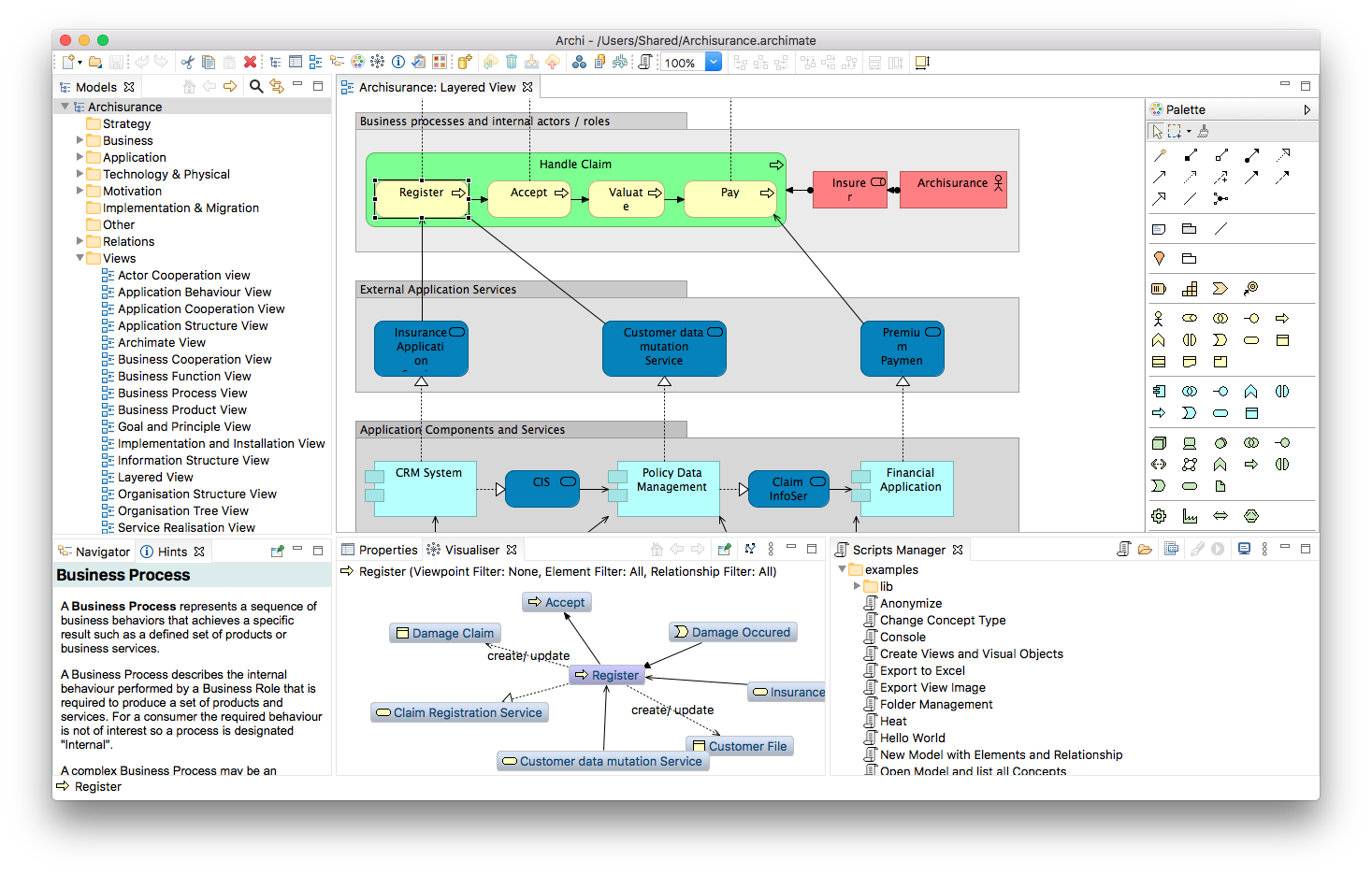

ArchiMate is an open and independent enterprise architecture modeling language created by The Open Group and it uses baseline as IEEE 1471 standard. It is a useful tool for software architecture planning because it enables teams to design and deploy their business effectively, by providing an array of structural, behavioral, and interaction diagrams. Structural diagrams include class diagrams, component diagrams, and deployment diagrams, while behavioral diagrams include use case diagrams and activity diagrams. Interaction diagrams include sequence diagrams, collaboration diagrams, and interaction diagrams. By providing all these diagrams and frameworks, ArchiMate helps software architects to align different stakeholders’ needs and provides an efficient way to create different views of the architecture. This helps to ensure that all stakeholders are in sync with the current and future state of the architecture.
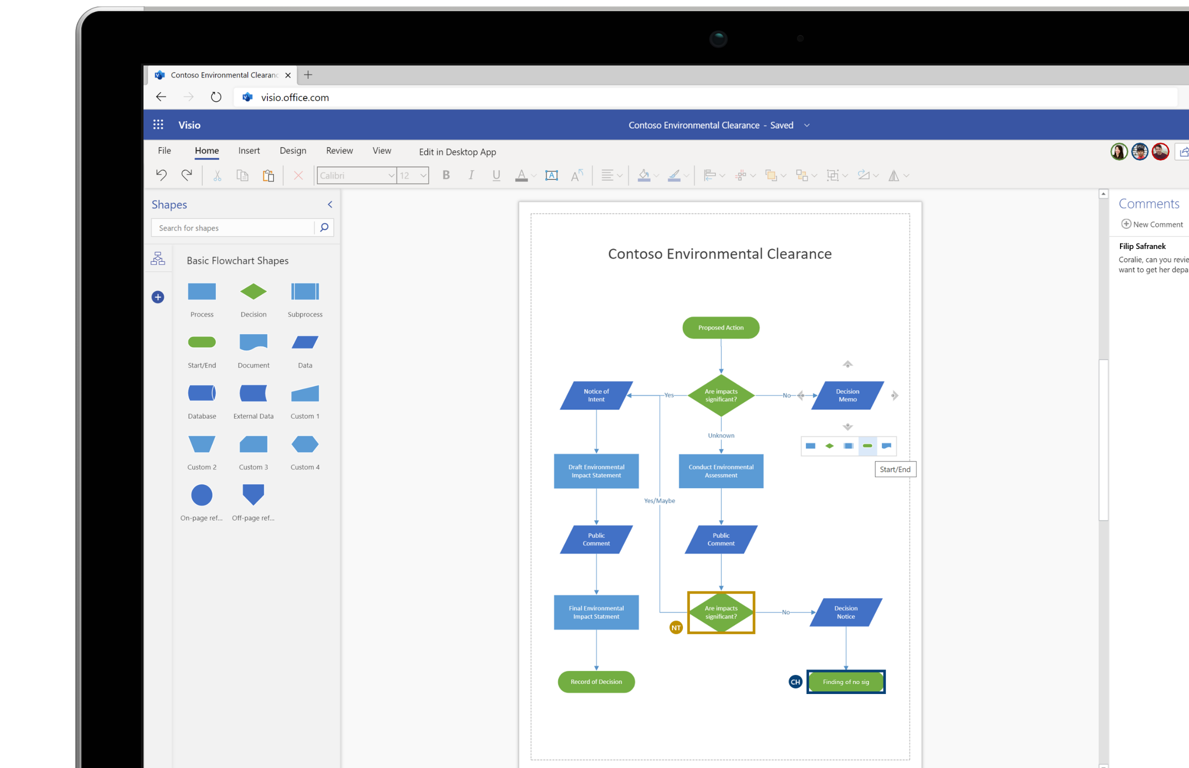
Microsoft Visio is a powerful vector graphic and diagramming tool from Microsoft Office family. It is considered the de facto standard for diagrams of all kinds, providing users with an easy way to create diagrams for a wide range of purposes. It can be used to enhance software architectural design by providing users with open templates focused on process or UML diagrams, and helps users to work visually from anywhere at any time. It also allows users to create beautiful professional software or infrastructure diagrams in minutes and can integrate with third-party tools like MS Office, GSuite, and Trello. Additionally, users can also import, export, and modify Visio files and stencils, making it an ideal choice for enterprise architects across all industries.
3. Gliffy


Gliffy is a great tool for software architecture planning due to its multiple features and functions. It allows you to create various types of diagrams such as Flow Chart, Org Chart, Venn Diagram, Wireframe, Mindmap, and Network designs, all with an intuitive user interface and an attractive selection of shapes and colors. You can drag-n-drop the required shapes from the left navigation, then export the file in PNG, JPG, SVG, or Gliffy format to your desktop. It also offers a comprehensive library of icons for cloud architects, from container orchestration systems to specific icons for Azure, GCP, and AWS architecture diagrams. With its sleek two-dimensional images, you can easily map out your entire hybrid cloud architecture. Plus, it integrates seamlessly with third-party tools like MS Office, GSuite, and Trello, and you can even import, export, and modify Visio files and stencils. In addition, it has thousands of templates, tools, and symbols making it a powerful and easy-to-use solution. All these features and functions make Gliffy a great tool for software architecture planning.
4. Omnigraffle
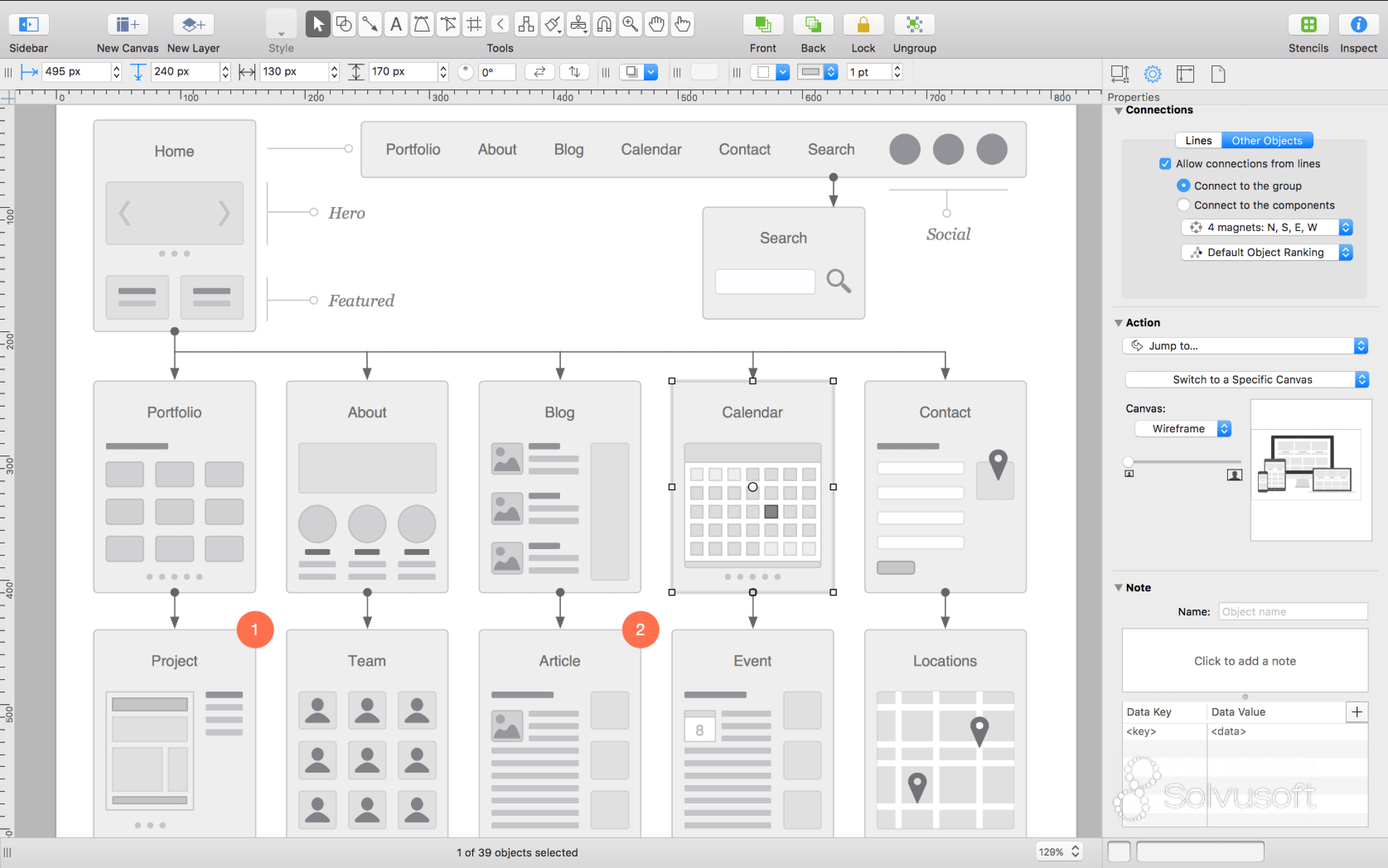

OmniGraffle is an amazing architecture diagramming software developed for macOS users. It is well-known for its powerful design and intuitive user interface, making it a great choice for software architecture planning. With OmniGraffle, users can create highly-detailed diagrams with a large selection of shapes, icons, and features. Additionally, it allows users to easily export diagrams as images or vector graphics so they can be shared or used in other programs. OmniGraffle is also great for real-time collaboration, as it allows users to quickly and easily add and modify elements of their architecture diagrams. In short, OmniGraffle is an excellent tool for software architecture planning, providing users with the tools and features they need to create detailed and accurate diagrams.
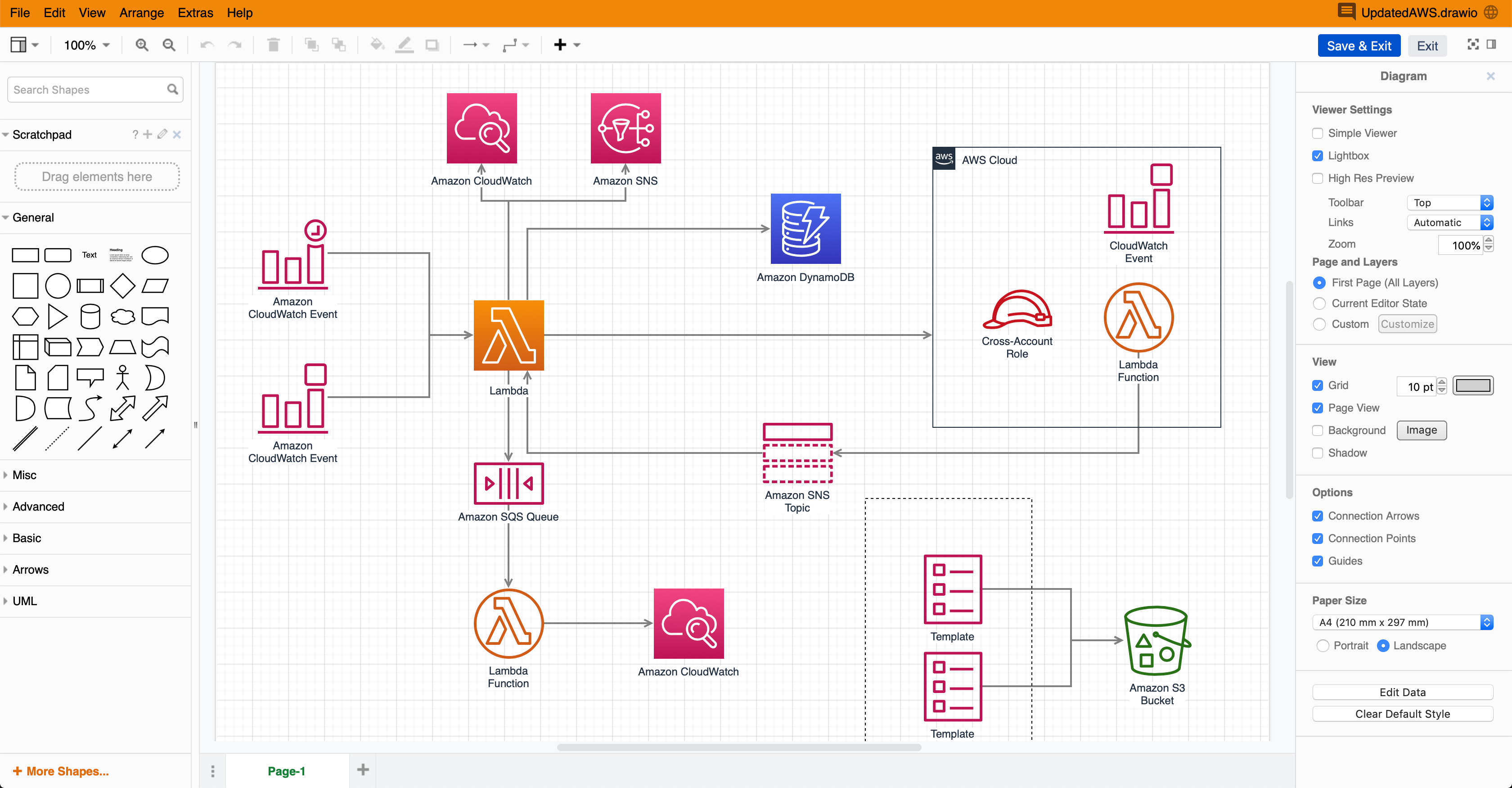

Draw.io is a fantastic tool for software architecture planning due to its vast selection of pre-defined templates, its drag-and-drop functionality, and its ability to export diagrams in various formats. With Draw.io, users have access to more than 50 pre-defined templates in various categories, making it easy to create a flow chart or any diagram to accurately visualize their infrastructure. Additionally, the drag-and-drop functionality helps users quickly and easily design their diagrams with the help of the many shapes available. Finally, Draw.io allows for the export of diagrams in various formats, such as PNG, JPG, SVG, or Gliffy, making it a great tool for sharing. With Draw.io, users can quickly and easily create diagrams and plans for their software architecture, making it a great tool for software architecture planning.
6. SmartDraw
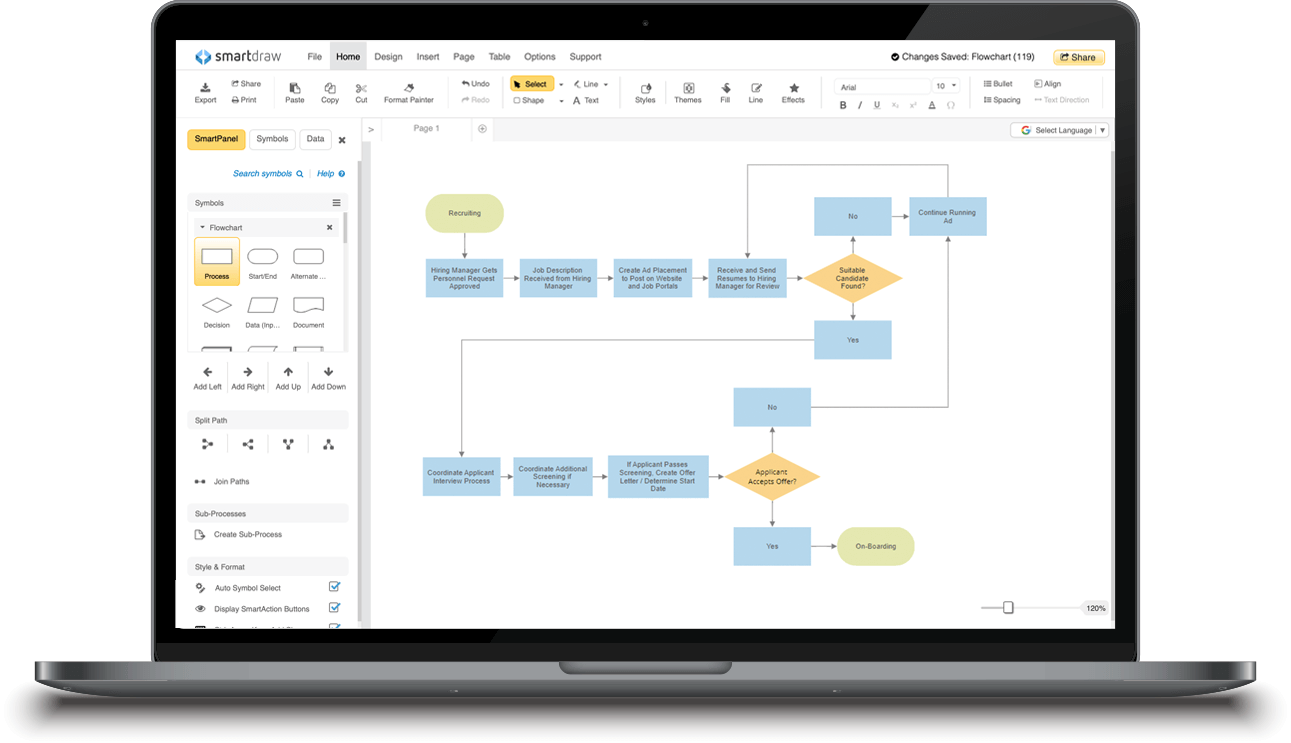

SmartDraw is an incredibly useful tool for software architecture planning due to its wide range of features, tools, and symbols. With SmartDraw, you can create a variety of diagrams, from flowcharts and floor plans to network diagrams, graphs, and CAD drawings. This makes it easy to effectively visualize your software architecture plan in an accurate and intuitive way. Furthermore, SmartDraw integrates seamlessly with third-party tools like MS Office, GSuite and Trello, allowing you to quickly and easily import, export, and modify Visio files and stencils. Additionally, you can use SmartDraw either online from any device or download it on your desktop. These features make SmartDraw an ideal choice for software architecture planning.
7. Creately
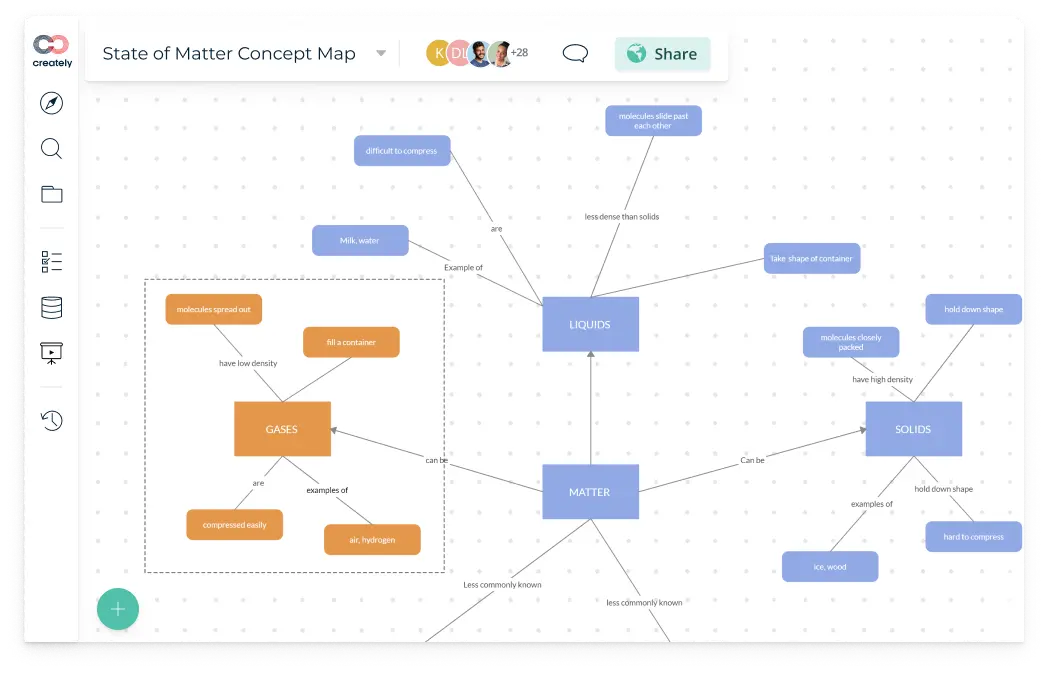

Creately is an ideal tool for software architecture planning as it provides a variety of features for users to create and collaborate on diagrams. Its drag-and-drop features make it easy to create diagrams that can illustrate complex ideas and systems. It also provides add-ons for collaboration and catalog creation, which is a great help when planning software architecture. Furthermore, it has an impressive range of shapes and design elements to choose from, allowing users to create intricate diagrams quickly and accurately. Additionally, there is a free version of Creately that offers five diagrams and one project, making it accessible and cost-effective. All of these features make Creately a useful tool for software architecture planning.
8. Terrastruct
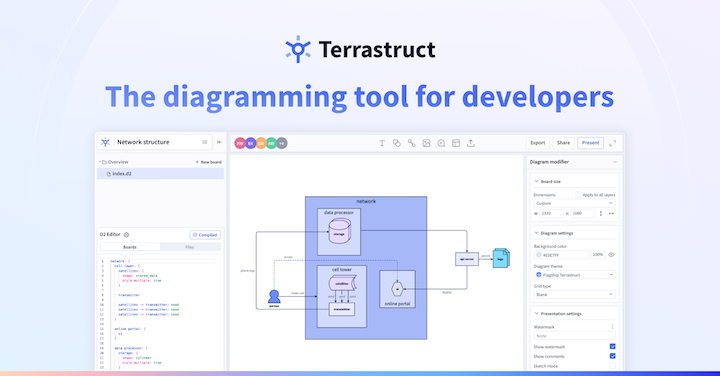

Terrastruct is a powerful diagramming tool designed specifically for software architecture. It offers a number of features and functions that make it a useful tool for software architecture planning. These features include multidimensional diagrams, auto layout, unique integration with Github, live collaboration, a huge icon set specific to software diagrams, password protection, team features such as shared templates and image uploads, a layout engine specifically designed for software architecture diagrams, and a web viewer for professional presentations. Furthermore, users can purchase a standalone TALA license to run everything locally and get the benefits of the layout engine. In short, Terrastruct is a great tool for software architecture planning that offers a wide range of features and functions.
9. Lucidchart
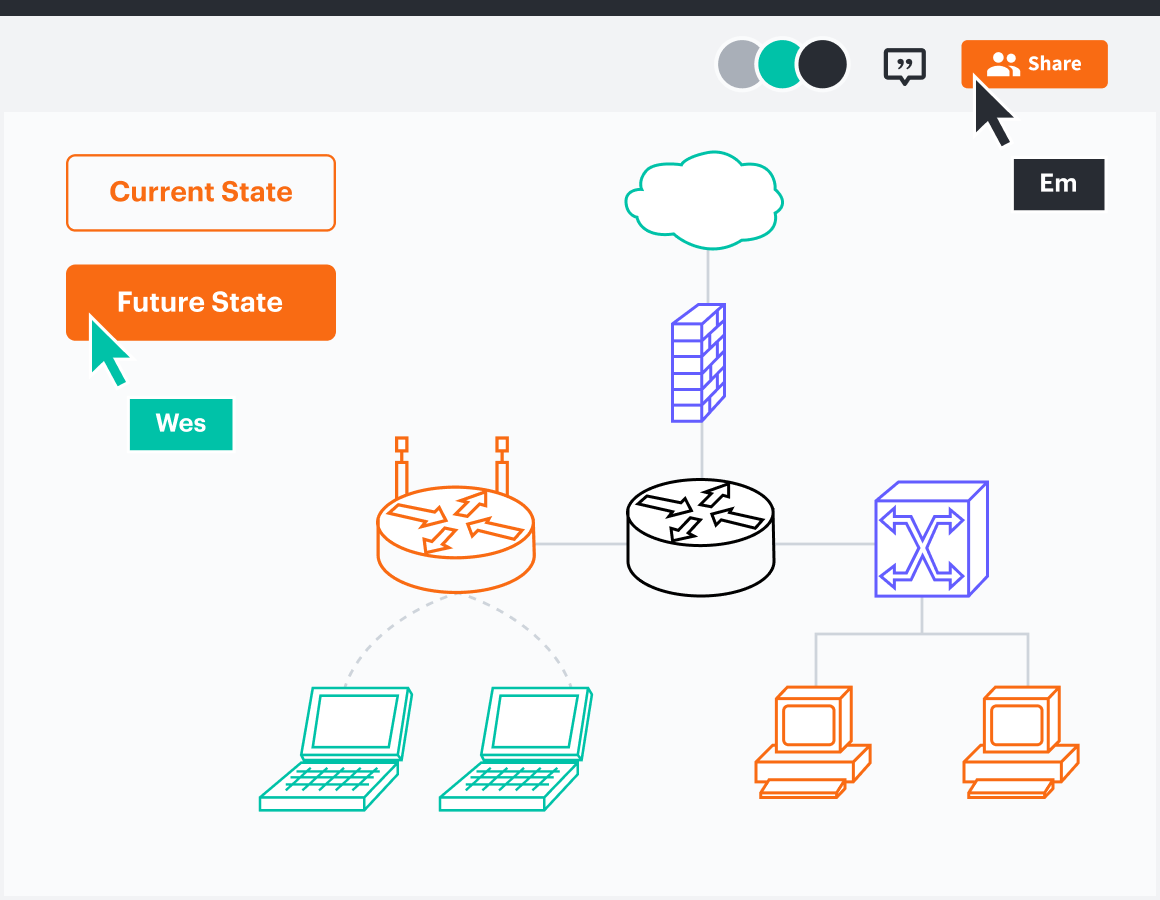

Lucidchart is a great tool for software architecture planning, as it offers a variety of features and capabilities that make it highly suitable for the task. First, it provides an intuitive and user-friendly interface, with a wide array of premade templates that cover a range of designs and shapes, making it easy to create visuals for software architecture. Additionally, Lucidchart offers freeform diagram creation with no validation, allowing for a rapid visual explanation of ideas. Furthermore, it is a collaborative tool with features for multiple users, allowing for easy collaboration and feedback on projects. Finally, Lucidchart is a freemium model, offering basic functionality with the free plan and more advanced features with the paid plans. Overall, Lucidchart is an excellent tool for software architecture planning and can reduce the time and effort needed to create visuals for software architecture.
Bonus: Kubernetes architecture icons for your slides
Creating presentation slides for an architecture design is an important way to communicate your vision for the project. Kubernetes offers an official set of icons, available in the community repository, to help you create diagrams of your Kubernetes architecture. Here is a step-by-step guide on how to use these icons in your presentation slides:
- Download the icons from the Kubernetes community repository.
- Open your presentation slides in a program such as PowerPoint, Google Slides, or Keynote.
- On a new slide, add a blank canvas for the diagram.
- Insert the Kubernetes architecture icons into the canvas.
- Position and arrange the icons to create your desired layout.
- Add annotations and labels to the diagram to explain the architecture further.
- Save the changes and add the slide to your presentation.
By following these steps, you can easily use the Kubernetes architecture icons in your presentation slides to create a visually appealing and informative diagram.
Conclusion
Software architecture is a critical part of any software development project. By using the right tools and techniques, you can improve your software architecture design skills and produce better results. With the 12 software architecture planning tools and techniques listed in this article, you can get started on your journey to becoming a better software architect today.

